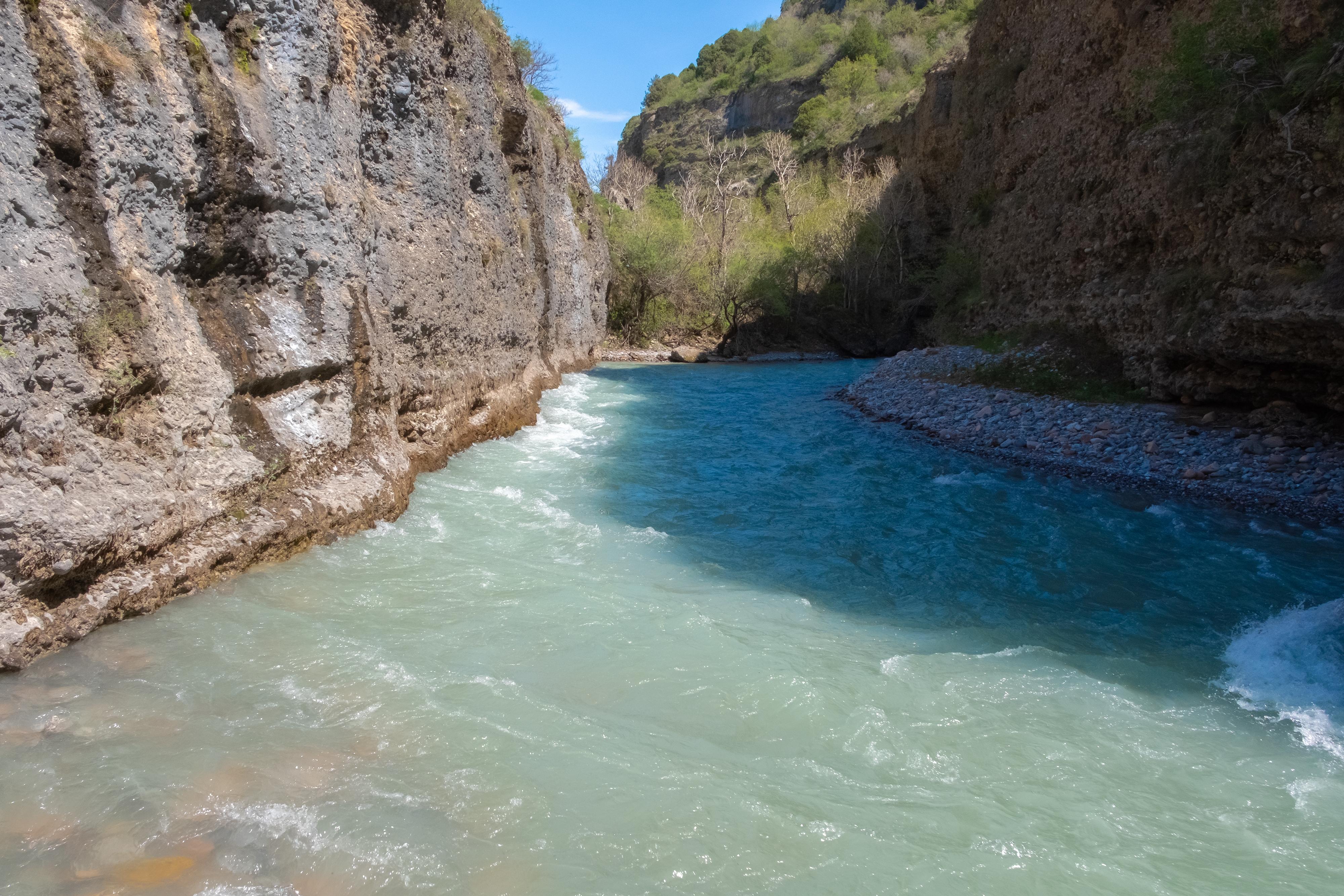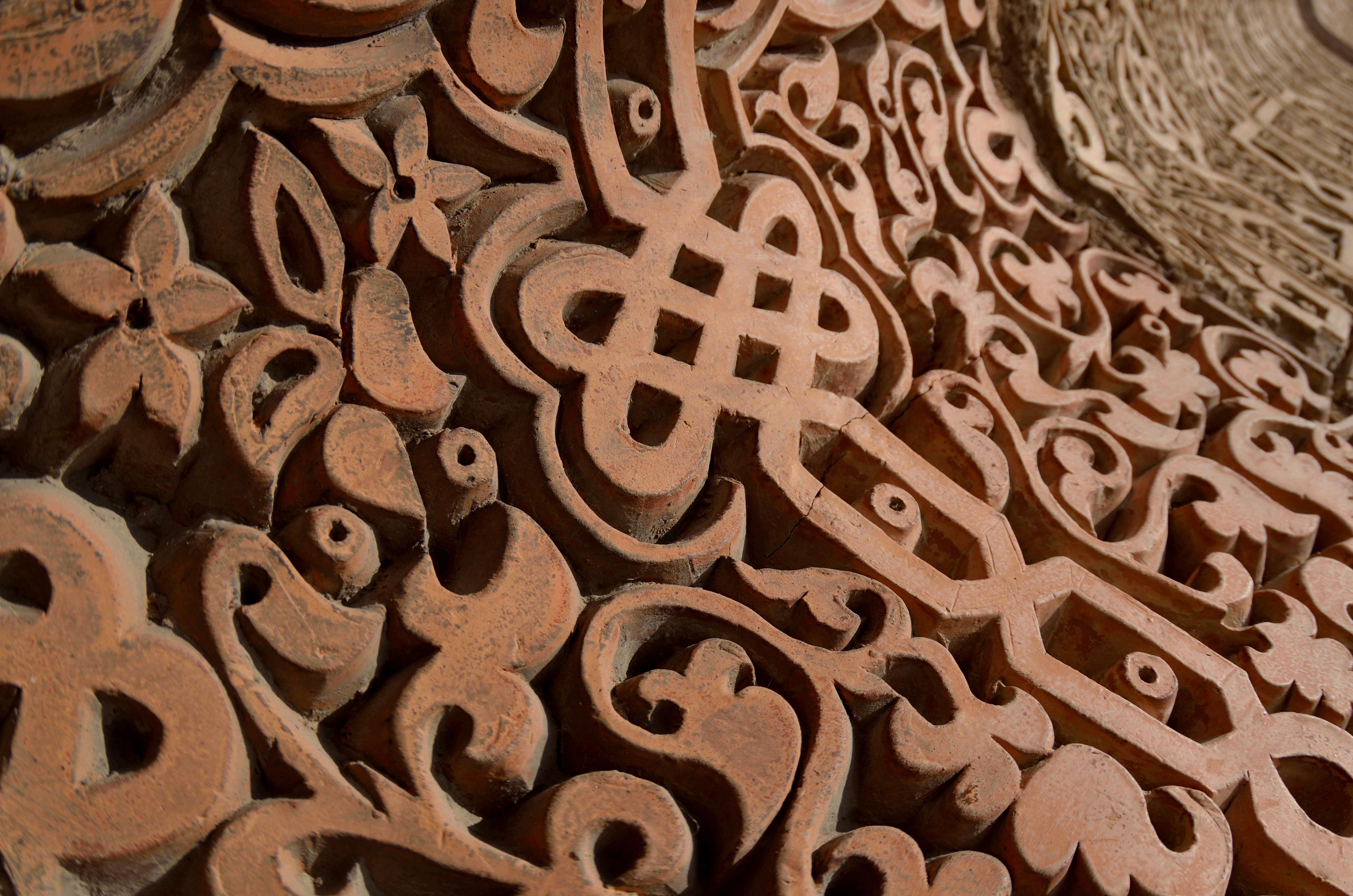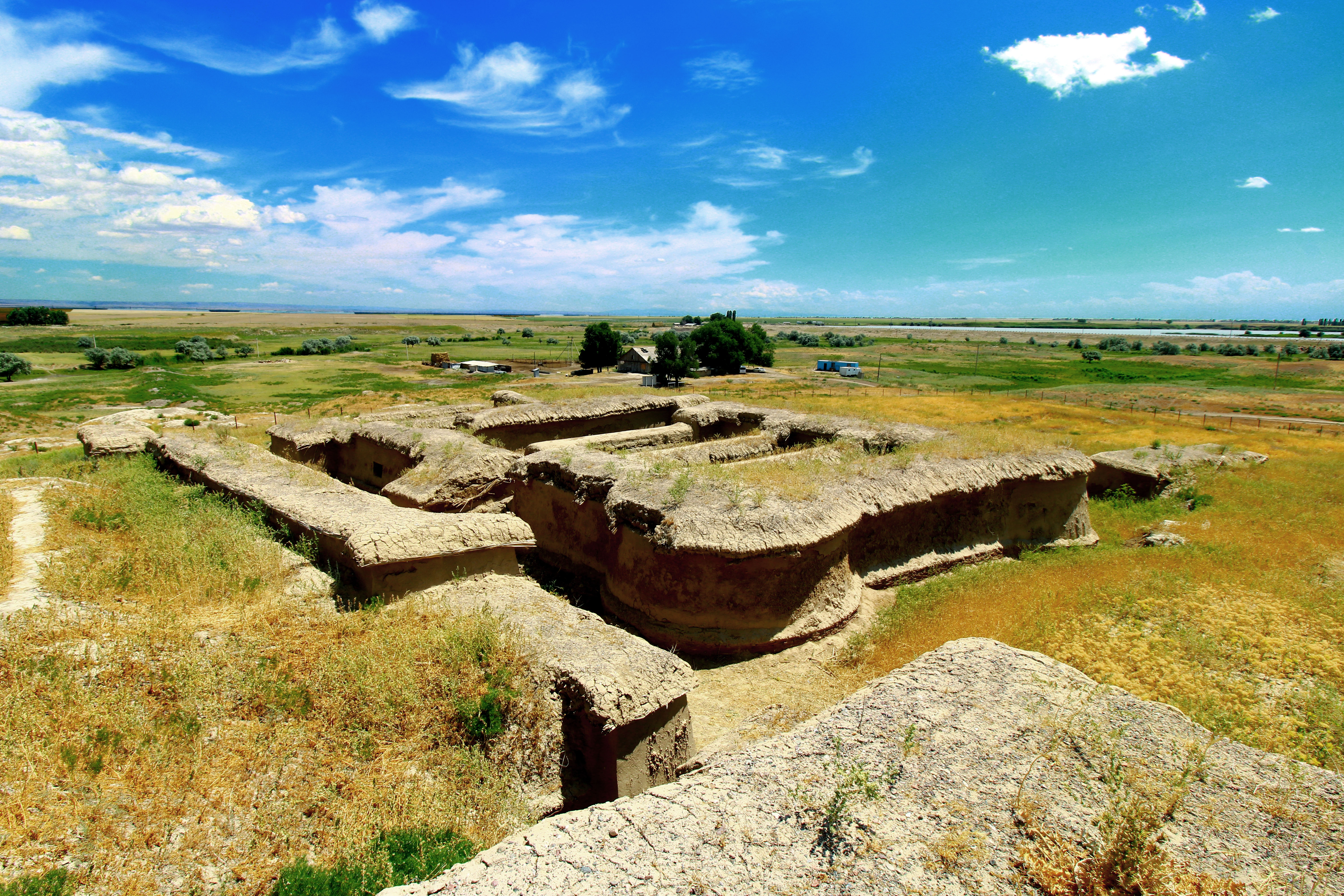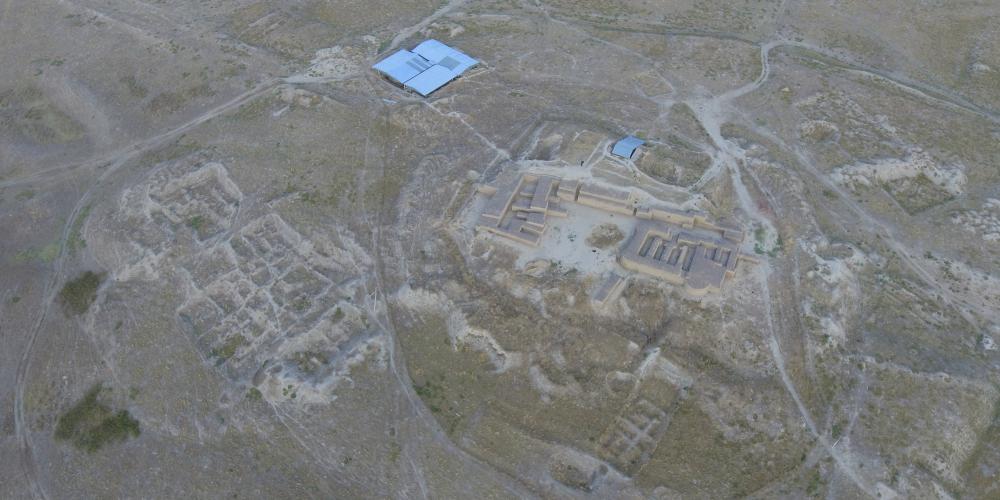Aktobe Settlement - Silk Roads: The Routes Network of Chang’an Tianshan Corridor

Located near the confluence of the Aksu and Chu rivers, Aktobe enjoyed a steady water supply as well as comfortable climatic conditions, helping the city to become a prosperous agricultural community. But it also had the benefit of being in a prime position along the Chang’an-Tianshan trading corridor of the Silk Road. With dynamic relationships between the sedentary city-dwellers and the nomadic people in the region, Aktobe quickly expanded after its founding in the 6th century into a multi-ethnic and cosmopolitan city.

As Aktobe grew, its rulers built the strong earthen walls for protection from invasions aimed at Aktobe’s affluence, as well as to mark the boundaries of land use amidst the nomadic majority. The outer rampart was 25 kilometres long, with an inner rampart of 17 kilometres - the impressive length an indication of Aktobe’s economic and political influence in the region. Within the fortifications were two town territories (shakhristans), the largest more than two kilometres long with 21 premises uncovered within it so far. The smaller shakhristan had the main role of protecting the city's citadel, most of which was built around the 11th century.
The great influence the Sogdian civilisation had on the political, economic and cultural life in Central Asia did not overlook Aktobe. The wineries and associated artefacts found on site are attributed to them, as their expertise in the production of grapes and wine was beyond compare. Cultural features from other sources like Tokharistan, Chach (Tashkent), and Ustrushana were also identified in the site, especially in the castle construction. Some archaeologists even compare it to Balsagun, a former capital city of the vast Western Wing of the Karakhanid Empire. There's no doubt that Aktobe's central location made it a hub of international trade during those busy medieval years on the Silk Road.

A Mirror of Time
Aktobe dates back to the 6th century, established at the time of the Turkic Khaganate. In later centuries, during the Karakhanid Khaganate it reached its peak, as demonstrated by a collection of 3000 Karakhanid coins found on site. In terms of structure, it represents a classic medieval city in Kazakhstan - high mud walls, shakharistan with citadel in the centre and rabad, an agricultural suburban area. A rich collection of artefacts and crafts of various materials was found on site, including ceramics, metal and glass crafts, bronze candlesticks, jugs, vessels, lamps, jewelry - and the list is long.

The citadel has not stayed the same since its construction in the 6th century. In the 8th century the castle was built on a new platform and expanded, especially the defensive constructions. Later on, the fortress walls were rebuilt and strengthened. Eventually, during the 11-12th centuries, more premises were built, including a yard. In the early 13th century, the structures of the citadel collapsed and life in Aktobe came to an end.
Many archaeological expeditions have studied Aktobe over the last century. Some of the findings are on display in the Reserve Museum of Ancient Taraz. Today, the site is well conserved, with some parts of the citadel and the dwellings reconstructed. Despite that, the development of roads and infrastructure threatens the settlement’s condition. Its inscription as a UNESCO World Heritage site in 2014 supports the efforts to keep protecting and exploring this unique monument and promoting its universal value.
How to get there
The Ancient Settlement of Aktobe can be reached by car from Taraz or Almaty and is about halfway along the A-2 road that connects the two cities. It's approximately three hours' drive from either of them.
Visitors can also opt to drive from Kyrgyzstan leaving from Bishkek, which is about two hours by road. However, this route would involve crossing the border and require the appropriate visa.
How to Visit
The main cities nearby are Taraz and Almaty. There you can find tour guides and accommodation. It is highly recommended for the tourists to hire some sort of transfer to the attraction as it is hard to find on maps and it can be easy to get lost. If staying in Taraz, visitors can easily do a day trip to Akyrtas Archaeological Site as well.

At first sight, it's hard to visually grasp the size of Aktobe, which is spread across both sides of the charming Aksu river, but climb the citadel's hill and you can get an excellent overview of the surroundings. The central ruins are located on the west bank, with the citadel and the Shakhristan (town territory) adjacent to it. They are surrounded by the city's famed long walls, which appear as large mounds of earth stretching into the distance, with remains of five towers rising from the ancient fortification. Walking along the paths that would once have been bustling streets, you'll find more archeological points of interest, including a rabad (suburb area), smaller castles, baths, a water supply system, and the base of a minaret.


